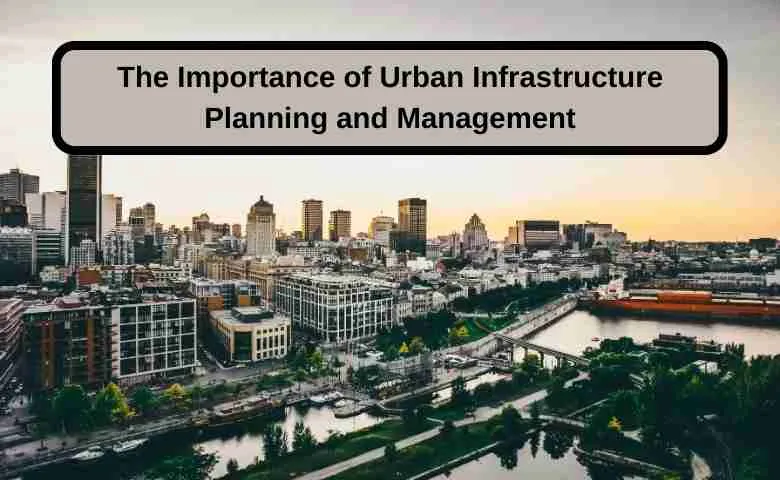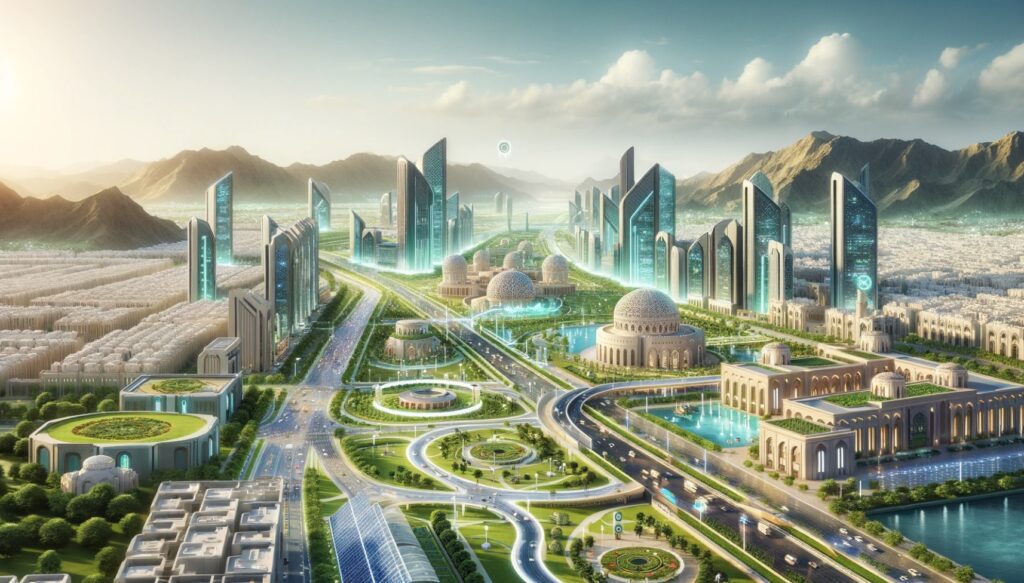Urban planning in the Gulf countries has always stood as a beacon of ambition, innovation, and forward-looking vision. The remarkable growth of cities like Dubai, Abu Dhabi, Doha, Riyadh, Manama, and Muscat reflects not just architectural brilliance but also a carefully designed framework of smart administration. These nations, despite being situated in one of the world’s most challenging natural environments, have managed to transform their landscapes into thriving, globally admired hubs. Their secret lies in how effectively they integrate smart governance, technology-driven decision-making, and sustainable policies into every layer of urban planning.
The Visionary Foundation of Gulf Urban Planning
At the heart of Gulf urban development is vision. Leaders across these countries have always emphasized long-term planning over short-term fixes. Instead of focusing solely on present challenges, their strategies are built to accommodate rapid population growth, changing economic dynamics, and global competitiveness. Visionary programs such as Saudi Arabia’s Vision 2030, the UAE’s Centennial 2071, and Qatar’s National Vision 2030 highlight how administration goes beyond basic governance to create futuristic frameworks that steer urban development.
Smart Administration as a Driving Force
Administration in Gulf nations is not limited to bureaucratic functions. Instead, it acts as a central driver of urban innovation. Policies are crafted not only to regulate but also to inspire and facilitate growth. Digital platforms, e-governance tools, and streamlined processes ensure that decision-making happens quickly and efficiently. This smart administration style allows Gulf countries to implement large-scale projects in record time, something that astonishes global observers.
Balancing Tradition with Modernity
What makes Gulf urban planning unique is the delicate balance between preserving cultural identity and embracing modernity. While skylines in Dubai and Doha are filled with futuristic towers, city planning also respects traditional architectural styles and community values. This blending is possible only through thoughtful administrative policies that enforce cultural preservation alongside modernization. By doing so, cities remain globally competitive while staying rooted in their heritage.

Technology at the Core of City Management
Technology plays a vital role in Gulf administration for urban planning. Smart cities like Dubai and NEOM in Saudi Arabia are being developed with artificial intelligence, big data analytics, and Internet of Things (IoT) integration at their core. These technologies allow administrators to monitor traffic, manage resources, and predict urban challenges before they escalate. Through real-time data collection, decision-makers can optimize transport systems, reduce energy wastage, and ensure sustainable development.
Infrastructure Development with Strategic Precision
Infrastructure in Gulf cities is not developed randomly but through meticulous planning. Roads, airports, ports, and public transport systems are interconnected in ways that support both residents and global trade. Smart administration ensures that every project, from metro systems in Riyadh and Doha to airports in Dubai and Abu Dhabi, aligns with larger economic and social goals. This integration helps create cities that function seamlessly and remain attractive to businesses and tourists alike.
Sustainability at the Heart of Urban Policies
Urban planning in the Gulf is also deeply influenced by sustainability goals. Recognizing the challenges of climate change, limited water resources, and dependence on fossil fuels, administrators are pushing for eco-friendly designs. Green building regulations, renewable energy integration, and sustainable transport networks are increasingly becoming mandatory. The use of solar energy in Dubai, wind projects in Oman, and large-scale green spaces in Saudi Arabia reflect administrative commitment to environmental responsibility.
Smart Housing and Community Development
Urban planning is not only about skyscrapers and highways but also about creating livable communities. Gulf administrations have invested in smart housing projects that integrate modern technology with affordability. Housing schemes often come with community centers, healthcare access, and recreational facilities, ensuring a better quality of life. By planning neighborhoods with people in mind, administrations ensure social harmony alongside infrastructural growth.
Public Participation and Citizen-Centric Governance
Smart administration also means giving citizens a voice in the urban planning process. Gulf nations have embraced public participation by creating digital portals where residents can share feedback, report issues, or suggest improvements. These systems allow administrators to connect with the needs of the population more effectively, creating trust between citizens and government. A citizen-centric approach ensures that development is not just impressive on paper but truly meaningful in practice.
Transportation as a Key Pillar of Urban Growth
Transport systems are one of the most significant achievements of Gulf urban planning. From the driverless metro in Dubai to futuristic hyperloop projects under consideration, transportation is treated as a core aspect of growth. Smart administration ensures integration of buses, metros, ride-sharing apps, and even electric scooters into urban frameworks. This reduces congestion, lowers emissions, and provides residents with multiple mobility options.
Managing Population Growth with Strategy
The Gulf is home to a large expatriate population, and this brings unique challenges to urban planning. Smart administration takes this into account by planning for diverse housing needs, multicultural communities, and inclusive social policies. The adaptability of administrative systems in accommodating different population dynamics is one of the reasons why Gulf cities remain globally attractive.
Mega Projects as Catalysts for Urban Transformation
Perhaps no region in the world is as ambitious with mega projects as the Gulf. Whether it is NEOM’s futuristic city in Saudi Arabia, The Pearl in Qatar, or Dubai’s Palm Jumeirah, these projects represent bold visions backed by efficient administration. Such mega projects are not only about tourism and prestige but also about testing innovative planning models that can later be applied to other urban developments.
Smart Administration and Economic Diversification
Urban planning in the Gulf is closely tied to economic diversification. Administrators recognize that thriving cities are essential for attracting investment and reducing dependence on oil. By creating financial hubs, technology parks, and industrial free zones, Gulf nations use urban planning as a tool for economic resilience. Smart administration ensures these developments are strategically placed to maximize impact.

Education, Healthcare, and Human Capital Development
Another crucial aspect of Gulf urban planning is the integration of education and healthcare systems into city design. Universities, schools, and hospitals are strategically located within residential zones, reducing travel times and ensuring accessibility. This reflects administrative foresight in recognizing that human capital development is just as important as infrastructural expansion.
The Role of International Collaboration
Gulf administrations also rely heavily on collaboration with international experts, architects, and technology providers. By inviting global partnerships, they bring in fresh ideas and advanced techniques, enriching the quality of urban planning. These collaborations also position Gulf cities as global hubs for innovation, trade, and tourism.
Resilience Against Natural and Economic Challenges
The Gulf region faces unique challenges such as extreme heat, limited freshwater, and economic fluctuations. Smart administration ensures resilience by creating strategies that address these risks. From desalination plants and underground reservoirs to financial buffers and diversified investment, administrators prepare cities to withstand both environmental and economic pressures.
The Future of Gulf Urban Planning
Looking ahead, Gulf countries are set to push boundaries even further with projects based on artificial intelligence, renewable energy, and sustainable city concepts. Floating cities, vertical farming, and autonomous transportation networks are some of the ideas already under development. Smart administration remains the guiding hand that ensures these futuristic visions turn into reality.
Human-Centered Growth as the Ultimate Goal
While the world often admires the Gulf for its skyscrapers and mega projects, the deeper achievement lies in how urban planning continues to focus on human-centered growth. Smart administration ensures that cities are not only visually impressive but also livable, inclusive, and sustainable for generations to come.
Do follow Gulf Magazine on Instagram.
Also Read – Regional Unity Strengthens Gulf’s Administrative Progress



